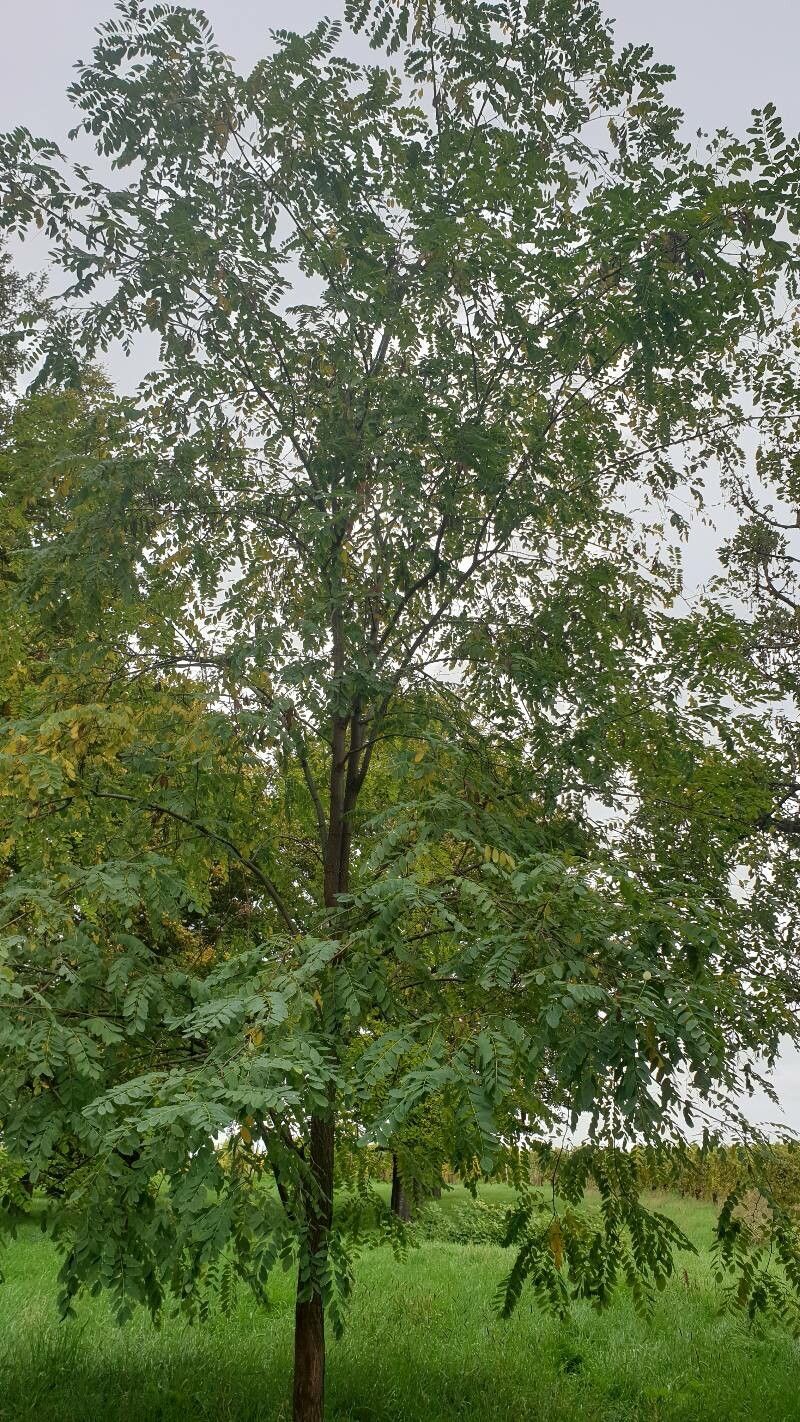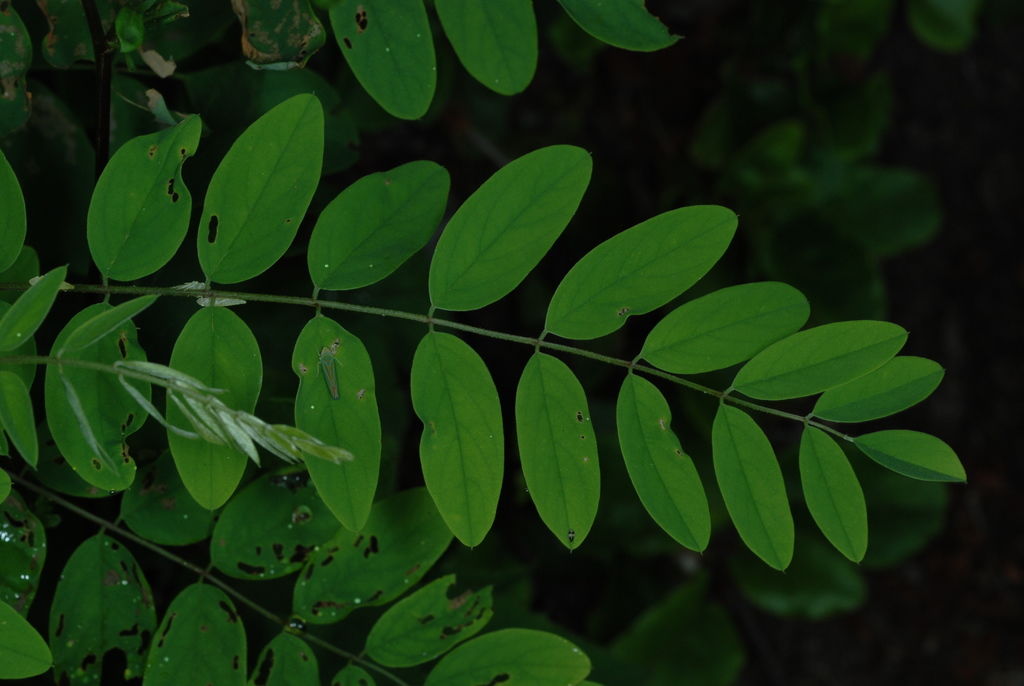Clammy Locust
robinia viscosa
Also known as: ["Viscous Locust","Sticky Locust"]
Overview
A deciduous tree native to eastern North America, known for its fragrant pink or rose-purple flowers and sticky, glandular hairs on its stems and leaves.
Benefits & Perks
["fragrant flowers","wildlife attractant (bees, butterflies, birds)"]
Botanical Classification
| Phylum: | Magnoliophyta |
| Class: | Magnoliopsida |
| Order: | Fabales |
| Family: | Fabaceae |
| Genus: | Robinia |
| Botanical Name: | Robinia viscosa |
Plant Characteristics
Basic Information
- Category: Trees
- Suitable Location: outdoor garden in open spaces with good air circulation
- Suitable For:
- Is Weed: No
- Allergenicity: moderate
Environmental Needs
- Climate: {"temperatureRange":"–15–35°C"}
- Hardiness: {"zones":"4–8"}
- Misting: rarely required, only if ambient humidity is very low
- Drainage: Fast-draining to prevent root rot.
- Soil Type: Well-draining loam with organic matter; tolerates poor soils but thrives with amendments.
Maintenance Level
- Maintenance Level: moderate
- Toughness Level: moderate
- Pruning Frequency: Annually in late winter or early spring before new growth begins.
- Pruning Intensity: Moderate; remove up to one-third of old growth if needed.
Care Details
Ideal Sunlight Coverage:
Full sun (6–8 hours/day); tolerates partial shade but blooms best in direct light.
Sunlight Tolerance Tips:
Acclimate new plants gradually to full sun; protect from intense midday sun in hot climates; ensure adequate airflow to prevent fungal issues.
Care Requirements
Care Difficulty
moderatemoderate
Sunlight
full sun
Rotate plant for even growth; use shade cloth in extreme heat; avoid placing near reflective surfaces that intensify light.
Watering
every 7–10 days during growing season, reduce in winter
Water thoroughly but infrequently; ensure good drainage; avoid wetting foliage.
Soil
well-drained, loamy soil with moderate fertility
pH: Slightly acidic to neutral (pH 6.0–7.0).
Avoid heavy clay soils; ensure good aeration; test pH before planting.
Temperature
Hardy in USDA zones 4–8; prefers 60–75°F (15–24°C); tolerates winter cold but needs protection from late frosts.
Avoid placing near drafty windows; maintain consistent temperatures; protect from extreme heat/cold spikes.
Fertilizing
every 4–6 weeks during spring and summer
Fertilize only during active growth; dilute liquid fertilizer to half strength; stop feeding in late summer.
Propagation
Methods
Softwood cuttings in late spring or early summer.
Step-by-Step Propagation Guide
- Take 4–6 inch cuttings.
- Remove lower leaves.
- Dip in rooting hormone.
- Plant in medium.
- Maintain humidity.
Best Time: Late spring to early summer when new growth is flexible but mature.
Environment
High humidity (70–80%), indirect light, and consistent warmth (65–75°F).
Medium
Perlite and peat moss mix (1:1 ratio) with good drainage.
Hormone
Rooting hormone recommended for faster root development.
Timeline
Roots in 4–6 weeks; establish in new pot or ground within 1–2 months.
Tools Needed
Pruning shears, rooting hormone, plastic bags, misting spray bottle.
Quick Tips
Use morning-cuttings for better success; keep soil consistently moist but not waterlogged; provide bottom heat if possible.
Pruning & Repotting
Pruning Guide
Method
Selective thinning; heading back of overgrown branches; removal of dead/diseased wood.
Pruning Plan
Shape the plant; remove dead or crossing branches; encourage airflow and light penetration.
Tools
Pruning shears, loppers, gloves, disinfectant.
Checklist
Disinfect tools; prune before bud break; remove dead wood first; shape evenly.
Repotting Guide
Best Season
Early spring before active growth starts.
Pot Size
Increase pot size by 2–3 inches in diameter; ensure similar depth.
Method
Remove plant gently; trim roots if crowded; use fresh soil mix; ensure drainage holes are clear.
Suggestions
Repot every 2–3 years or when roots fill the container; beneficial for young plants to encourage growth.
Checklist
Prepare new pot; trim roots if needed; use fresh soil; water lightly after repotting.
Advanced Care Tips
Watering Mastery
Watering Checklist
Check soil moisture; water deeply; ensure drainage; avoid wetting leaves.
How to Apply Water Properly
Water at the base of the plant, ensuring moisture reaches the root zone; allow excess water to drain away; water early in the day to minimize evaporation.
Watering Schedule Tips
Water deeply once the top inch of soil is dry; reduce frequency in winter to prevent root rot.
Soil Improvement
Add compost or aged manure; incorporate perlite or sand for drainage; use mulch to retain moisture.
Temperature Stress Management
Signs of Temperature Issues
Leaf scorch in excessive heat; delayed bud development in cold stress; leaf drop in sudden temperature shifts.
Cold Stress
Slows growth; may cause dieback of tender shoots; reduces flowering potential.
Solution: Mulch heavily around the base; protect from harsh winds; cover during late frosts.
Hot Stress
Wilting; leaf scorch; reduced flowering; increased susceptibility to pests.
Solution: Provide afternoon shade; increase watering; use reflective mulch to reduce soil heat.
Fertilizing Guide
Fertilizing Checklist
Use balanced fertilizer; apply in spring; avoid late-season feeding.
Fertilizing Method
Use balanced slow-release fertilizer in early spring; avoid over-fertilizing, especially nitrogen-rich formulas.
Common Problems & Solutions
Toxicity Warning
Cats
ToxicCats are also susceptible to the toxic effects of Robinia viscosa. The plant's compounds can cause severe gastrointestinal upset and neurological issues in felines.
⚠️ Symptoms:
🌿 Toxic Parts:
⚡ Toxic If:
if eaten
Dogs
ToxicThe toxic compounds in Robinia viscosa can be harmful to dogs, causing gastrointestinal and neurological symptoms. The severity of effects may vary depending on the amount ingested and the size of the dog.
⚠️ Symptoms:
🌿 Toxic Parts:
⚡ Toxic If:
if eaten
Humans
ToxicRobinia viscosa, commonly known as Viscous Locust, contains toxic compounds such as rotenone and cytisine, which can cause significant physiological distress upon ingestion. These compounds interfere with the nervous system and can lead to severe symptoms, particularly in larger quantities.
⚠️ Symptoms:
🌿 Toxic Parts:
⚡ Toxic If:
if eaten
Frequently Asked Questions
Q: Is Robinia viscosa toxic to pets?
A: Yes, it is toxic to dogs and cats.
Q: Does Robinia viscosa attract wildlife?
A: Yes, it attracts bees, butterflies, and birds with its fragrant flowers.
Q: What are common problems with Robinia viscosa?
A: Common issues include leaf spots and wilting.
Quick Reference
| Family: | Fabaceae |
| Care: | moderate |
| Light: | full sun |
| Water: | every 7–10 days during growi |
Get Expert Care Tips
Download the Plantious app for personalized care reminders and plant identification!
Google Play App Store








